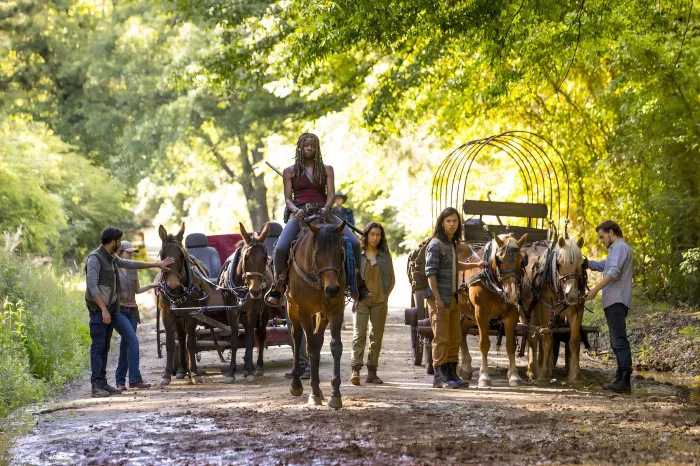“The Walking Dead” presents viewers with a post-apocalyptic world overrun by zombies, known as walkers, who relentlessly hunt for living humans. However, one intriguing aspect of this universe is the absence of undead animals, raising questions about why animals don’t turn into walkers like humans do. In this article, we will explore the possible explanations for this phenomenon, examining both narrative considerations within the series and real-world scientific theories.
Narrative Explanations:
From a narrative perspective, “The Walking Dead” offers several explanations for why animals don’t turn into walkers, each contributing to the overarching themes and atmosphere of the series.
- Virus Specificity: One explanation for the absence of undead animals is rooted in the specificity of the virus or pathogen responsible for reanimating the dead. In “The Walking Dead,” the exact nature of the virus is never fully explained, but it is implied to affect only humans and not other species. This virus specificity may be a deliberate narrative choice used to heighten the sense of danger and isolation faced by human survivors, who must contend with an overwhelming horde of undead while also navigating a world devoid of other living creatures.
- Predatory Behavior: Another explanation for the absence of undead animals is tied to their predatory behavior and survival instincts. In “The Walking Dead,” walkers are depicted as mindless creatures driven solely by their primal urge to feed on living flesh. However, animals possess their own survival instincts and predatory behaviors, which may lead them to avoid or flee from walkers rather than becoming infected themselves. This avoidance behavior may serve as a natural deterrent to the spread of the virus among animal populations, ensuring that they remain unaffected by the undead plague.
- Narrative Focus: Additionally, the decision to focus primarily on human survivors in “The Walking Dead” may contribute to the absence of undead animals within the series. By centering the story on human characters and their struggles to survive in a world overrun by walkers, the series creates a sense of intimacy and immediacy that would be diluted by the inclusion of undead animals. Keeping the focus on human survivors allows the series to explore complex themes of morality, identity, and resilience, while also maintaining a sense of tension and suspense throughout the narrative.
Real-World Considerations:
While the narrative explanations within “The Walking Dead” provide compelling reasons for why animals don’t turn into walkers, there are also real-world considerations to take into account when exploring this phenomenon.
- Species Specificity: From a scientific standpoint, viruses and pathogens often exhibit a degree of specificity for particular host species. While some viruses, such as influenza, can jump between different species, others are more selective in their ability to infect and replicate within specific hosts. The virus responsible for reanimating the dead in “The Walking Dead” may be inherently specific to humans, lacking the necessary mechanisms to infect and reanimate other species.
- Physiological Differences: Additionally, animals and humans possess distinct physiological differences that may influence their susceptibility to infection and reanimation. The virus in “The Walking Dead” may rely on specific molecular interactions or cellular mechanisms unique to humans, rendering animals immune to its effects. Alternatively, animals’ immune systems may be better equipped to combat and neutralize the virus, preventing its spread and replication within their bodies.
- Environmental Factors: The absence of undead animals in “The Walking Dead” may also be influenced by environmental factors such as habitat and behavior. Animals that inhabit remote or isolated areas may be less likely to come into contact with infected individuals, reducing the risk of transmission and spread of the virus. Additionally, animals’ natural instincts and behaviors, such as migration patterns and social structures, may help to mitigate the risk of infection and limit the impact of the undead plague on animal populations.
Conclusion:
In conclusion, the absence of undead animals in “The Walking Dead” is a complex and multifaceted phenomenon with both narrative and real-world implications. From a narrative perspective, the specificity of the virus, animals’ predatory behavior, and the focus on human survivors all contribute to the absence of undead animals within the series, enhancing the sense of danger and isolation faced by human characters. From a real-world standpoint, species specificity, physiological differences, and environmental factors may also play a role in preventing animals from turning into walkers. Together, these considerations offer insight into the fascinating and often contradictory nature of the undead apocalypse portrayed in “The Walking Dead,” adding depth and complexity to the series’ portrayal of survival in a world overrun by the undead.
https://www.rnada.com/archives/12526
https://www.rnada.com/archives/12514
https://www.rnada.com/archives/12522

